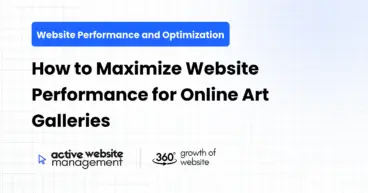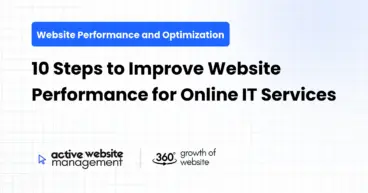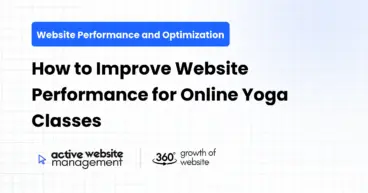December 17, 2024
8 min read
In today’s digital landscape, where mobile traffic dominates, optimizing website performance for mobile users is crucial. Mobile optimization isn’t just about responsiveness—it’s about making sure your website loads fast, runs smoothly, and provides a seamless user experience across a variety of devices. A slow or poorly optimized mobile website can lead to frustrated users, high bounce rates, and lost revenue.
This comprehensive guide will walk you through actionable tips, tools, and techniques to optimize your website for mobile, ensuring your visitors enjoy a fast, efficient, and engaging experience, no matter the device they use.
Before we dive into the specifics of mobile website optimization, it’s important to understand why mobile performance is so crucial.
1. Mobile Usage is on the Rise
According to recent reports, over 50% of all website traffic now comes from mobile devices. This trend is only expected to continue, meaning that more and more users will interact with your site from smartphones and tablets.
2. Search Engine Rankings
Google uses mobile-first indexing, which means the mobile version of your website is considered the primary version for ranking purposes. If your mobile site isn’t optimized, it can negatively impact your SEO rankings and reduce visibility on search engines.
Don’t Just Maintain Your Website—
Grow It using Active Website Management! Don't Wait for Growth—Accelerate It with Active Website Management
3. User Experience
Mobile users expect websites to load quickly and be easy to navigate on smaller screens. Poor performance can lead to frustration, causing users to leave your site and look for alternatives. Faster load times and smooth performance directly correlate with higher user satisfaction and conversion rates.
4. Conversion Rates and Revenue
Websites that perform well on mobile devices tend to see higher engagement, longer session durations, and better conversion rates. Faster websites not only improve user experience but also increase sales and lead generation.
Several factors contribute to mobile website performance. Understanding these will help you optimize effectively.
1. Page Load Speed
Page speed is one of the most important aspects of mobile optimization. Research shows that 53% of mobile users will abandon a page if it takes more than 3 seconds to load. Slow pages not only drive users away but also hurt your SEO rankings.
2. Responsive Design
Responsive web design ensures your website adapts to different screen sizes. A responsive site dynamically adjusts its layout and content to fit smaller mobile screens, providing a user-friendly experience.
3. Content Optimization
Heavy images, unnecessary scripts, and large videos can slow down your mobile website. Optimizing content for faster loading times is a key part of performance optimization.
4. JavaScript and CSS
Unoptimized JavaScript and CSS files can delay the rendering of your website, especially on mobile devices with limited processing power. Minifying these files can help reduce their size and improve load times.
Now that we understand the importance of mobile optimization and the factors that affect performance, let’s dive into actionable tips for optimizing your mobile website.
1. Compress and Optimize Images
Images are often the largest files on a website, and they can drastically affect load times, especially on mobile devices. Here are a few tips for optimizing images for mobile:
- Use the Right Format: JPEGs are ideal for photos, while PNGs are better for images with transparency. WebP is a newer format that offers superior compression without sacrificing quality.
- Compress Images: Use tools like TinyPNG to reduce the file size of your images without compromising quality.
- Responsive Images: Serve different image sizes based on the device being used. Use the
srcset attribute to display images in appropriate sizes for mobile users.
Don't Wait for Growth—Accelerate It with
Active Website Management Don't Wait for Growth—Accelerate It with Active Website Management
2. Minimize HTTP Requests
Each element on a page (such as images, scripts, and stylesheets) requires an HTTP request. The more requests your page makes, the longer it will take to load. To minimize HTTP requests:
- Combine Files: Combine CSS and JavaScript files where possible to reduce the number of requests.
- Use Inline Styles and Scripts: For smaller scripts and styles, consider inlining them in the HTML to reduce the need for additional requests.
3. Leverage Browser Caching
Browser caching allows the browser to store static resources, such as images, CSS files, and JavaScript files, so that they don’t need to be reloaded each time the user visits the page. This speeds up the site’s loading time for returning users.
- Set Expiry Dates: Use cache-control headers to tell the browser how long to store resources before checking for newer versions.
- Utilize CDN (Content Delivery Network): CDNs can cache your website’s static files across multiple servers worldwide, improving load times for users no matter where they are located.
4. Enable Lazy Loading for Images and Videos
Lazy loading is a technique where images and videos are loaded only when they come into view. This reduces initial page load time and data usage, especially for mobile users on slower networks.
- Implement Lazy Loading: You can implement lazy loading using JavaScript libraries such as Lazysizes, which enables images to load as the user scrolls.
5. Optimize Your Code
Overly complex HTML, CSS, and JavaScript can slow down your website. Optimizing your code is crucial for improving mobile website performance.
- Minify Your Files: Use tools like UglifyJS to minify JavaScript and CSSNano for CSS. This reduces the file size by removing unnecessary characters such as spaces and comments.
- Remove Unused Code: Use tools like PurgeCSS to eliminate unused CSS code, making your website lighter and faster.
6. Utilize Accelerated Mobile Pages (AMP)
AMP is an open-source framework developed by Google to help websites load faster on mobile devices. It strips down HTML and uses a simplified version of JavaScript to ensure faster page rendering.
- Consider Using AMP: If your website has a lot of content-heavy pages (like news or blogs), implementing AMP can significantly boost performance.
7. Optimize Your Hosting and Server
The server where your website is hosted plays a vital role in performance. Here are a few server-related tips:
- Choose a Fast Web Host: Select a hosting provider with fast servers and low latency. Consider a host that uses SSD storage, which is faster than traditional HDDs.
- Use HTTP/2: HTTP/2 is a more efficient version of the HTTP protocol that reduces latency and improves the speed of loading assets.
There are several tools available that can help you analyze and optimize your website for mobile performance. Here are some of the best tools you can use:
1. Google PageSpeed Insights
Google PageSpeed Insights is a free tool that analyzes your website’s performance on both desktop and mobile devices. It provides actionable recommendations for improving load times and overall user experience.
2. GTmetrix
GTmetrix is another popular website performance testing tool. It provides detailed performance reports and offers suggestions on how to reduce load times.
3. Pingdom Website Speed Test
Pingdom helps you analyze your website’s load time, performance grade, and other important metrics. It allows you to test your website from different locations worldwide.
4. WebPageTest
WebPageTest offers advanced website speed testing. It allows you to test your website on various mobile devices and see how it performs under different network conditions.
Website performance optimization isn’t a one-time task—it requires ongoing attention. This is where Active Website Management (AWM) comes into play. AWM ensures your website’s performance remains top-notch by continuously monitoring and optimizing its speed, security, and content. With services like SEO and speed optimization, UI/UX improvements, and content updates, AWM helps your website stay ahead of the competition.
For example, if you’re looking to improve your website’s SEO or implement regular performance enhancements, you can check out Active Website Management’s plans. They offer a proactive approach to website management that goes beyond maintenance, ensuring your website evolves and improves month after month.
6. Conclusion
Mobile website performance optimization is a critical component of delivering a great user experience and maintaining high SEO rankings. By following the tips outlined in this article—compressing images, minimizing HTTP requests, leveraging caching, and using tools like Google PageSpeed Insights—you can significantly improve your mobile website’s performance.
Remember, optimization is an ongoing process. Tools, continuous testing, and services like Active Website Management are key to keeping your website running smoothly, ensuring that your visitors always have the best experience possible.
For more detailed information on website management, SEO, and performance optimization, you can explore our blog posts on related topics like WordPress Care Checklist and Optimize WooCommerce Database.
Start optimizing today, and watch your mobile users enjoy a faster, more seamless experience!






